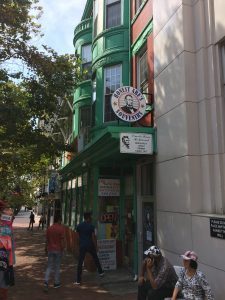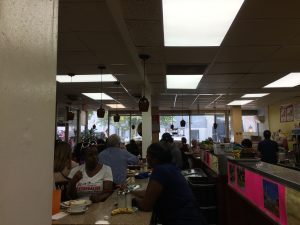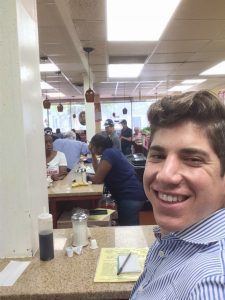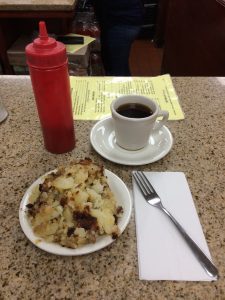For my first article assignment, I traveled to Ford’s Theatre, the historic location where John Wilkes Booth shot Abraham Lincoln. I originally had planned to write about the theatre as a modern tourist attraction. However, the notes I took while touring the site bored me, and if the story notes bored me, I knew the story would bore readers. Instead of writing about a dead president, I walked into the Lincoln Waffle Shop across the street to write about the lively characters who worked there. What resulted probably was the most fun article I have ever written. (I will update this post with the link when I have published it.)
As sad as it may seem, people care only about things that they can relate to. For this reason, they take interest in stories about other people in general, and stories about people who have had experiences similar to their own in particular; hence, my story about diner people who remarkably seem the same whatever the setting: servers who call you “honey,” the indecipherable scrawl written on your bill, and the sausage gravy that singlehandedly can cause coronary thrombosis. Diners are one of those few remaining universal touchstones to which American writers can allude and create immediate understanding. I embedded my visit to Ford’s Theatre as a deeper part of my story, but on the surface, I described a more familiar location with as much history as Ford’s—and possibly more popularity.
My decision to change the focus of my story in the middle of info gathering taught me several lessons. Out of all the lessons I learned, the need to personify things impressed me as the most important. Writing about objects as objects loses readers. I might have written a compelling piece about Ford’s Theatre, but it would have demanded more work than writing about the Lincoln Waffle Shop. At the diner, I could describe people; at Ford’s, I would have had to personify things, from the room across the street where Lincoln died to the stretcher soldiers used to carry him there. I might have pieced together a novel story that would personify the museum displays as actors reliving for tourists the death of one of our greatest presidents. Or I could have done as I did and find real people that would make the story a genuine story about people.
Whatever we do, for better or worse, we do because of other people. I am grateful to study a concentration at American University that reveals this truth to people my writing reaches. Prof. Krasnow says the worst thing journalists can do is be wrong. I think the worst thing journalists can do is lie. Missing deadlines, forgetting names, and going on tangents all detract from the quality of an article. Deliberately misrepresenting the truth as a journalist understands it destroys whatever quality remains. I know everything I write will fail to satisfy some people in some way. However, if I always write what I know is true, then I will be content no matter what people think.




